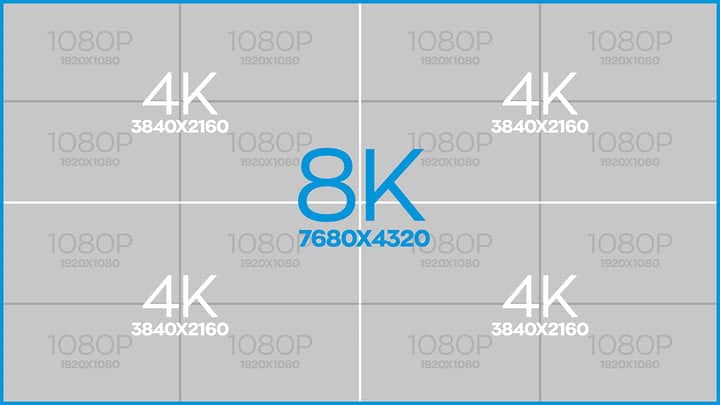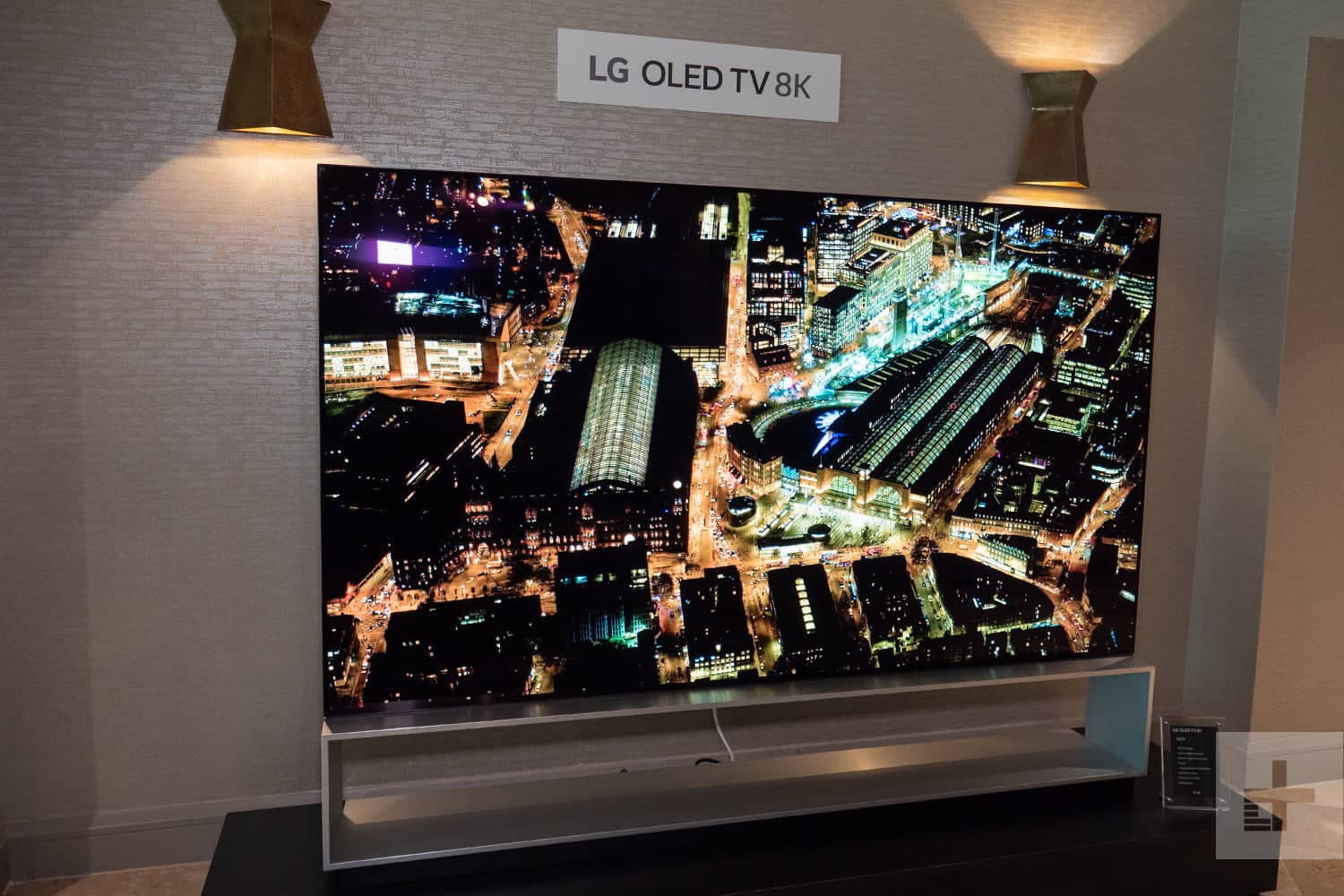8K UHD
What is 8K UHD?
Mathematically, 8K resolution is actually a whopping 16 times the pixels of Full HD (1920 × 1080 seen on regular Blu-ray discs) and four times the pixels of the 4K resolution (3840 × 2160 seen on current 4K Ultra HD Blu-ray discs), that’s 7680 × 4320, or 33 million pixels (33,117,600, to be exact). To more easily visualize it, imagine four 4K TVs placed in a four-by-four grid. That’s definitely a lot of pixels.
That said, you may want to ask, do all these extra pixels really matter? Absolutely, yes. On the current mainstream 4K UHD TVs, we get eight-megapixel images, which, compared to what the modern smartphone screens can now achieve, is not really overwhelming to human vision anymore. Thus, the 33-megapixel images that 8K can deliver, theoretically could be nothing short of the clearest images we are likely to see in the near future.

Where to Get 8K Content?
Is it still too early to talk about 8K content while most of us are still struggling to get more 4K content on our home 4K TVs? Believe it or not, there are already lots of 8K videos out there, way more than we may think. Simply type 8K videos in the YouTube search box, thousands of results will show up in seconds. YouTube might be the earliest one jumping on to the 8K bandwagon, but it is definitely not the only one. The secondly most popular video-streaming site Vimeo added support for 8K videos in November 2017, it now has over 6000 videos tagged as 8K. Other streaming services like Amazon, Netflix, Vudu, and the likes will surely follow suit quickly.
Besides, native 8K content isn’t the only channel we can get 8K videos. As the world’s leading multimedia software solution provider, DVDFab can also give its worldwide customers the power to produce 8K content at home, with the newly introduced upscaling algorithms applied in the conversion profiles of all the Ripper and Converter modules (64-bit, ver. 11.0.3.5 and later), including DVD Ripper, Blu-ray Ripper, UHD Ripper and Video Converter. Those conversion profiles include MP4.8K, MKV.8K, M2TS.8K, MP4.8K.10bit, MKV.8K.10bit and M2TS.8K.10bit, which are designed to upscale videos of all resolutions, especially those 1080p and above, frame by frame to 8K, and the difference in clarity is quite apparent. Moreover, the Video Downloader utility tool has also been enhanced to download 8K videos from all the supported websites.

Are 8K TVs Market-Ready Now?
Now that we have 8K videos to watch, but where do we watch them on? Are the 8K TVs commercially ready for mass consumers now? As a matter of fact, they are, and they have been here for a long period. Samsung already had an 8K model back in 2018, and at CES 2019, it has announced the availability of its 2019 QLED TVs, which include the Q900, an 8K model that’s available in sizes ranging from 65 to 98 inches. Other manufacturers are also starting to announce the availability of their 8K models. LG, for its part, has announced it will soon start selling OLED and LED TVs with 8K resolution. Sony’s 8K Z9G series will be available in 85- and 98-inch sizes, and TCL showed off an 8K Roku TV at CES that is widely expected to be available this year. It is just a matter of time 8K UHD TVs will go mainstream. As for how long we still have to wait for this to happen, there’s a clue — just think about how long it took you to upgrade your old TV to a 4K UHD TV you currently own at home! It might be even faster than that.

Downscale 8K UHD videos to 4K UHD Videos
With all being said above, what if I don’t want to invest on 8K TVs? Or at least I want to wait until its price drops to a reasonable level as the tech matures day by day? Actually, this probably is what most consumers are bearing in mind for now! Not a problem! The Video Converter module also ushers in a downscaling algorithm to help you convert videos of 8K resolution to 4K UHD videos, or even regular full HD videos of 1080p.
Furthermore, GPU hardware acceleration also applies to 8K video conversion, providing that your video card is capable of 8K encoding and decoding. The capable video cards include Nvidia's GeForce 10 (Pascal) series and above, such as:
GTX 1050 (Ti), GTX 1060, GTX 1070, GTX 1080, NVIDIA TITAN Xp, and etc.;
GeForce 16 (Turing) series, RTX1660, and etc.;
GeForce 20 (Turing) series, RTX 2060, NVIDIA TITAN RTX, and etc.;
For a detailed list, please refer to NVIDIA's official website at https://www.developer.nvidia.com/video-encode-decode-gpu-support-matrix

